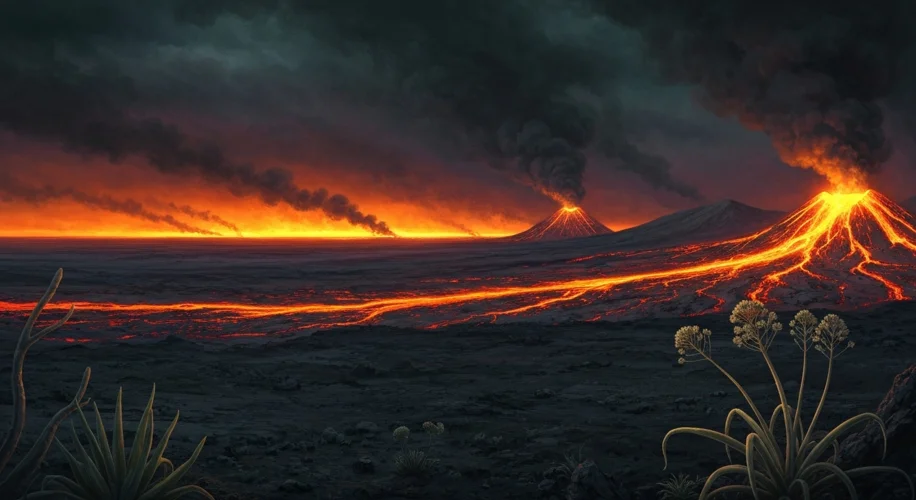Did you know that Earth once experienced a heatwave that lasted for a staggering 5 million years? It sounds like science fiction, but this wasn’t a hypothetical scenario; it was a very real consequence of one of our planet’s most devastating events: the end-Permian mass extinction, sometimes called the “Great Dying.”
This extinction event, which occurred about 252 million years ago, wiped out an estimated 96% of all marine species and 70% of terrestrial vertebrate species. But what’s fascinating, and a bit alarming, is what happened after this catastrophic die-off. Instead of a recovery period, Earth plunged into a prolonged period of extreme heat.
The Trigger: Volcanic Fury
Scientists have been digging into the evidence, and the leading theory points to massive volcanic activity. Imagine an eruption so vast it dwarfs anything we’ve ever witnessed. The Siberian Traps, a huge area of volcanic rock in Siberia, is the prime suspect. Over hundreds of thousands of years, colossal eruptions spewed an immense amount of greenhouse gases, primarily carbon dioxide (CO2), into the atmosphere.
These aren’t your everyday volcanoes. We’re talking about flood basalts, where lava flowed out over vast areas, creating thick layers of rock. This wasn’t just a single eruption, but a sustained period of volcanic activity that fundamentally altered Earth’s atmosphere.
The Greenhouse Effect on Steroids
When these massive amounts of CO2 were released, they acted like a giant blanket around the planet. CO2 is a potent greenhouse gas, meaning it traps heat from the sun. While a certain amount of greenhouse effect is good – it keeps our planet warm enough for life – too much leads to runaway warming.
With so much extra CO2 pumped into the atmosphere, temperatures soared. This led to the 5-million-year heatwave. Think about the implications: oceans warmed dramatically, ocean life struggled to survive in the heat and altered chemistry, and terrestrial ecosystems were pushed to their limits. It’s a stark reminder of how sensitive our planet’s climate system can be to atmospheric changes.
Lessons from a Scorching Past
Studying events like the end-Permian extinction and its aftermath helps us understand the long-term impacts of significant environmental shifts. It shows us how interconnected Earth’s systems are – how geological events can trigger atmospheric changes, leading to profound biological consequences.
While the scale of the Siberian Traps eruptions is beyond anything happening today, this ancient heatwave offers a powerful lesson. It highlights the critical role greenhouse gases play in regulating our planet’s temperature and the potential for drastic climate shifts when those gases accumulate rapidly in the atmosphere. It’s a story from Earth’s deep past that resonates with our present concerns about climate change and underscores the importance of understanding our planet’s delicate balance.

